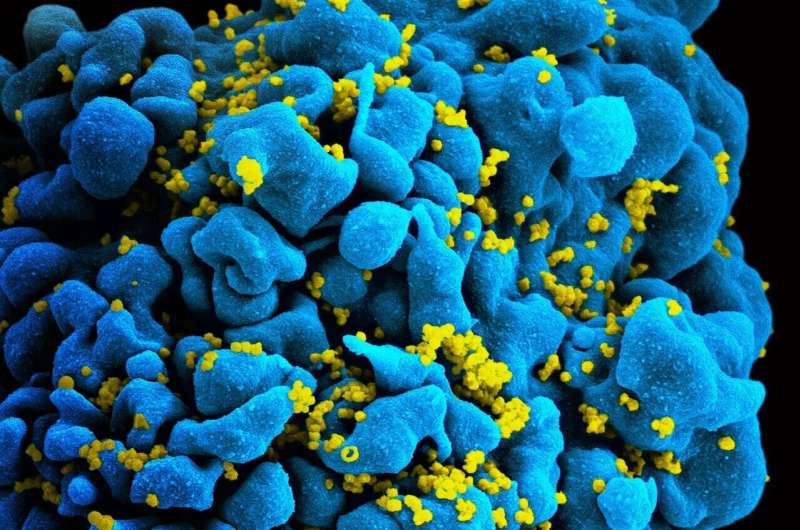New insight on potent HIV antibody could improve vaccine design

In the quest to develop an effective HIV vaccine, researchers have focused attention on identifying and targeting the region of the virus's outer envelope where a lineage of antibodies are able to dock and neutralize the virus.
But true to form with HIV, these broadly neutralizing antibodies, or bnAbs, are highly complex and arise under an intricate series of events that have been difficult to trace backward to their origins and recreate.
A new observation, led by researchers at the Duke Human Vaccine Institute, highlights the importance of previously unstudied mutations that arises early in bnAbs, giving the antibodies the flexibility to adapt to changes in the virus's outer envelope protein structure. This flexibility enables the antibody to dock on diverse strains of the virus and more potently neutralize them.
The finding was published this month in the journal Nature Communications.
"We focused on mutations in a specific region of the antibody called the 'elbow region,' which is required for making the antibodies more flexible and for their function in neutralizing HIV-1 viruses," said senior author S. Munir Alam, Ph.D., director of the Duke Human Vaccine Institute Laboratory of Immune Recognition and Biomolecular Interaction Analysis Core.
"We found that the selection of key elbow mutations and the flexibility trait is a required step in the early stage of maturation of a broadly neutralizing lineage," Alam said.
Alam and colleagues, including co-lead authors Rory Henderson and Brian E. Watts, used biophysical tools and molecular dynamic simulation methods that enabled the team to study changes in antibody molecular motion over time. This modeling enabled them to learn of the additional roadblock to HIV bnAb development.
"Vaccine design strategies will need to incorporate the requirement of the selection of key elbow region mutations in the early stage of the immunization regimen," Henderson said.
More information: Rory Henderson et al, Selection of immunoglobulin elbow region mutations impacts interdomain conformational flexibility in HIV-1 broadly neutralizing antibodies, Nature Communications (2019). DOI: 10.1038/s41467-019-08415-7


















